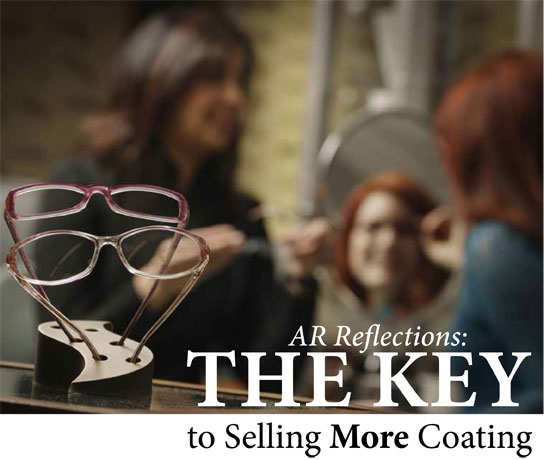By Paddy Kamen
 Last March, Envision: seeing beyond magazine sent out a call for nominations of women who are leaders in various sectors of our industry. The response was terrific and the honorees were notified in early June.
Last March, Envision: seeing beyond magazine sent out a call for nominations of women who are leaders in various sectors of our industry. The response was terrific and the honorees were notified in early June.
Each of their stories is truly inspiring. We congratulate these fine women on being nominated by their peers. And the honorees are…
Category: Entrepreneur
Wendy Buchanan
Listening to our instincts about where we can best serve others while realizing our potential is something that many of us aspire to.Wendy Buchanan has lived this process and her successful career path proves the wisdom of her approach.
Wendy started out as dental technician – not a great choice for someone with her love of social interaction and an entrepreneurial streak. Then a friend who knew a successful optician suggested it might be a good career for her. “I spoke to him and he offered me a job in his lab. I worked there on the weekends while doing my dental assistant job; then he moved me into the store part time. I enjoyed the challenges in the optical field so I obtained my opticianry diploma from Georgian College.”
Good move but that wasn’t all. Buchanan eventually tired of retail. “I couldn’t see myself doing that for another 20 years, so I trained to be an image consultant and began my own business. Clients asked me to help them choose eyewear and over time, I realized I could be an image consultant for eyewear alone, running a mobile eyewear boutique. When I left my retail job in 1998, I had no clients so I began networking through the fashion industry, starting out with a dozen frames on consignment.”
Buchanan simply loves the job she created for herself, going out to meet with clients in their homes and offices. “It’s about matching the eyewear to the individual’s face shape, personality, wardrobe and career. My clients come to me for every season and for specific events, such as weddings. I provide the personalized, individual touch that people can’t get in a store and many clients buy two or three pairs at a time.”
Having the flexibility to make her own schedule suits Buchanan to a ‘T’; she can take time off during the day for special school events with her children and makes a point of a weekly golf game with friends during the summer. She also enjoys the freedom to make her own business decisions as well as individual decisions that are best for her clients. “I’m not bound by bureaucracy, politics, procedures or store policies. If an opportunity comes up I base my decisions on how I feel. I don’t need to analyze the pros and cons just to please someone else.”
Fun is also key to Buchanan’s success. “The clients and I have a really good time and we both get excited when we make changes. It’s a positive and fun experience.”
In 2007 Buchanan started training other people to help their clients choose eyewear. She created and sells BeSpectacular™, a training system that helps fashion consultants and eyecare professionals take the guesswork out of choosing the perfect frame.
What is the biggest contributor to Buchanan’s success as an entrepreneur? It’s simple, she explains: “The biggest thing for me is to pay attention to how I feel about things, trust my instincts and base my decisions on them.”
Category: Leadership
Christine Breton*
Young people are typically full of energy, yet few lead organizations before they’re 30. And Christine Breton admits that her age was a bit of a handicap when, in 2001, she became general manager of Montreal-based Opto-Réseau at age 28.
Opto-Réseau is a buying club and business ‘banner’ group (each member owns their store under the name Opto-Réseau). Optical retailers can join the buying club only or become full members using the Opto-Réseau banner (along with buying club privileges). When Breton came on board the business had 14 full members out of a total of 20 buying group members.
How was Breton’s youthful enthusiasm received? “Sometimes, too much energy and too many new ideas disturb the established order, but fortunately, with time I learned to better calibrate my efforts in order to accomplish my goals,” she explains.
And accomplish them she certainly has: Opto-Réseau now has 53 full members and 30 buying group members.
How did she do it? “We revamped the program completely,” says Breton. “We developed a portfolio of tools to help our members, including media promotion, training and customized management tools that include finances, inventory and human resources, in addition to our excellent clinical management software.”
Breton is quick to point out that she didn’t achieve this single-handedly. “Everyone on our team has worked extremely hard to deliver the goods and for that I am enormously grateful. We’ve grown from a staff of three to 11 employees.”
Current challenges for Breton include ensuring that all members receive the ‘human touch’ from her staff. “It was one thing to provide that when we were small but now that we have 53 outlets, it’s more of a challenge. This is definitely the most important thing for us and it’s what we are known for. We want our members to succeed with their customers so we lead by example.”
The realities of today’s market make the services of Opto-Réseau valuable indeed. “The market has been tough for many people. Today, each customer is hard to win and you have to be well-organized to reach them,” says Breton.
‘Effort’ is a key value for Christine Breton. “I thank my parents for instilling it in me. Change doesn’t happen without effort. I see this effort from my head office team and I’m very proud of them and what we represent.”
Teamwork and flexibility come into play in Breton’s family life as well. “Having children has brought me a lot more humanity and patience. And I have to add that I’m very lucky to have married an amazing man with a big heart, who is patient and understands that I need to invest myself fully in my work to be satisfied.”
Still young at 41,Christine Breton can look forward to many more years of productive work, especially in light of the fact that her energy and drive remain in full force. Opto-Réseau and Quebec’s eyecare professionals are fortunate to have her!
*Note: Christine Breton is not related to Envision: seeing beyond publisher Martine Breton.
Category: Trailblazer
Dr. Diana Monea
Imagine taking out a loan to start a business back in 1978, when interest rates were an incredible 24 per cent. That’s when Diana Monea, then 22, and a new graduate of the University of Waterloo’s School of Optometry decided to launch her first practice in Regina.
“I had little to my name besides my license to practice but fortunately, a female loans officer believed in me. I promised to work really hard and pay it back.”
From that first practice, this farm-raised trailblazer began traveling to underserved rural communities throughout southern Saskatchewan, eventually starting two additional practices in Calgary. There she lives with her husband, Don, a computer engineer, who runs the business operations behind the scenes.
Diana Monea has really led the way in bringing optometry to people wherever they are. In addition to 34 years of optometric practice, she served the elderly community at a nursing home in Regina for 15 years. She also worked with inmates at a correctional facility for over a decade, and as a low vision consultant at the Pasqua Hospital in Regina for many years, assisting both children and adults with visual handicaps to live as independently as possible. Her Calgary clinics also offer comprehensive health services to people with fibromyalgia and chronic fatigue syndrome.
Her work also includes service as the chairperson of the Eye See Eye Learn programme, an eye-health programme for children in Alberta. In association with Essilor, every kindergarten child in Alberta has access to a free eye examination and those who need them receive free eyeglasses.
‘Street kids’ have also benefited from Monea’s efforts. As part of a Calgary-based charity programme known as Anna’s Vision, Monea provides eye exams and free glasses. “I say to them, ‘We’re going to get you seeing properly so you can be anything you want to be’. I want them to know that someone believes in their potential. I had one young man from China who didn’t speak English and could not see. After getting his glasses, he emailed me later to let me know that he had learned some English and that he found employment. That was so exciting.”
It’s hardly surprising that Diana Monea was the first optometrist in Canada to create a website dedicated to providing eye heath information (www.eyehealthcentres.com). And in 2000, she was the first North American optometrist to profile case studies in optometry, drawing from an extensive database of over 200,000 eye exams she has personally performed. Monea has presented these cases at many professional conferences over the years, to much acclaim.
You may have guessed by now that Diana Monea is motivated by strong altruistic values, in addition to being incredibly ambitious. “My career has given me many blessings and I really want to give back and make a difference. Especially when I’m mentoring young grads, I emphasize that a wonderful practice isn’t about money but about helping other people. When I get up in the morning I say, ‘Great, I have another day to make a difference!’”
Category: Research and Development/Design
Beverly Suliteanu
Few women today begin working in the family business at the tender age of eight but Beverly Suliteanu fondly remembers how it all began for her. “Our family would rent a ski cabin for the winter and during the Christmas holidays, Dad would bring three-ring binders and all the pages for the Western Optical catalogues. My brother and cousins and I would sit on the floor and put them together. We were each paid a nickel per catalogue.”
The company her father, Rodney, began in 1962 is now known as WestGroupe and Beverly is vice-president, responsible for marketing and product development. The firm has expanded in a fashion-forward direction under her guidance but the transition wasn’t seamless. “My first model was too loud and colourful for our customers at that time. It wasn’t the runaway bestseller I had anticipated,” she says, with a smile.
Both Beverly and her brother Michael, the company’s president, shared the goal of creating brands with the ability to go far beyond the conventional concept of a house brand. “In order to continue to grow and evolve our company, it was necessary to move beyond the value segment of the market, which was our strength. We focused on developing more of our own products and slowly we began to change our product positioning and company image,” she explains.
The big turning point for WestGroupe was the launch of KLiik Denmark in 2004. “I took everything I had learned about product, from the manufacturing of our house brands to the licensed brands we distributed for other companies, with the goal of creating a unique, fashion-forward, quality collection for the Canadian market,” she recalls. “The fact that it has resonated around the globe still amazes me. The brand is now sold in 40 countries.”
Suliteanu followed this success with Fysh (for boomer-generation women) in 2006 and Evatik (for men) in 2010. Each collection bears her signature creative stamp.
Traveling internationally for the business is a big part of Suliteanu’s job and her MBA in marketing and international business from Queen’s University helped prepare her for this role. Initially she accompanied her father and brother on buying trips to Italy and Asia, and as her experience grew, she assumed the leadership role in this area. Were suppliers comfortable in dealing with a woman? “It’s been an evolution but it was up to me to make sure they understood the role each of us plays in the company,” she explains.
Suliteanu continues to grow in her role. “I am definitely more confident now and trust my instincts. I push the limit a bit more when it comes to design and colour.”
Recently married and a part-time stepmother to twin pre-teens, Suliteanu is committed to carving out more personal time in her life. “In the past, work tended to outbalance my personal life. I’m making much more of an effort now to have a more balanced life and enjoy my new family.”
From her love of working on catalogues as a young girl to her life now as one of Canada’s leading designers and brand creators, Beverly Suliteanu has come a long way indeed. Let’s see what she comes up with next!
Category: Educator
Sheree Watson
Sheree Watson learned the art of a successful career switch out of necessity, and now shares her hard-won wisdom with the opticianry students she teaches.
“Although I began a career in nursing, I married young and wanted to be home with my kids,” says Watson. “Then I was diagnosed with cancer and my life shattered. I found myself on my own with four sons to support. I needed something that was physically undemanding and opticianry fit the bill, so after obtaining my diploma, I opened an optical store in Gibsons, B.C. in 1993.”
For a woman going into business for herself in the 1990s, it wasn’t easy getting a bank loan. “I wanted to work for myself and prove I could survive in a man’s world,” she says. “I had the shop for more than 10 years and it met my needs in terms of family life. I didn’t work evenings and my sons could come by after school and do their homework in the back of the store. Likewise, I could take paperwork home and do it in the evenings. It was very successful and I enjoyed the work.”
When Watson was asked to teach at the B.C. College of Optics (BCCO) in Surrey, she was initially reluctant. “I wanted to make sure my kids were finished school before I took it on full time, but when I did, it was fantastic and has proven to be a very positive development in my life.”
The main influence on Watson’s values growing up was her grandmother, with whom she lived until age six. “I also spent most of my summers with her,” she recalls. “She let me know that nothing was too hard for me if I just put my best foot forward. ‘You’re not made from sugar,’ she would say, and she led by example, working hard and giving her fullest to whatever she was doing. Everything in my life has stemmed from her influence.”
Watson, in turn, influences her students profoundly and they speak glowingly of her dedication to their success. Many of the students who enter the six-month diploma program choose it because it allows them to return to the work force quickly.
“I’ve taught optometrists and ophthalmologists, dentists and engineers from other countries who need a new career in Canada. Our program at BCCO may be shorter but it doesn’t compromise on knowledge or practical experience. I’ve worked very hard to make the program applicable to the work environment. For example, I’ve honed the practicum component so students will gain the experience needed to apply their skills.”
Seeing her students become opticians is Watson’s greatest reward. “I love to see them gain knowledge of optics and learn to apply it. I’m so happy that I chose this career at a point where my life was very difficult. It’s been wonderful for me and for many of my students as well.”
A hearty thank you to all our readers for nominating these amazing women. Thank you, also, to our honorees: we appreciate you taking time from your busy lives to share your personal stories with us. Inspiration is the music in life that keeps us going: each of you has inspired us, as you have countless others.








